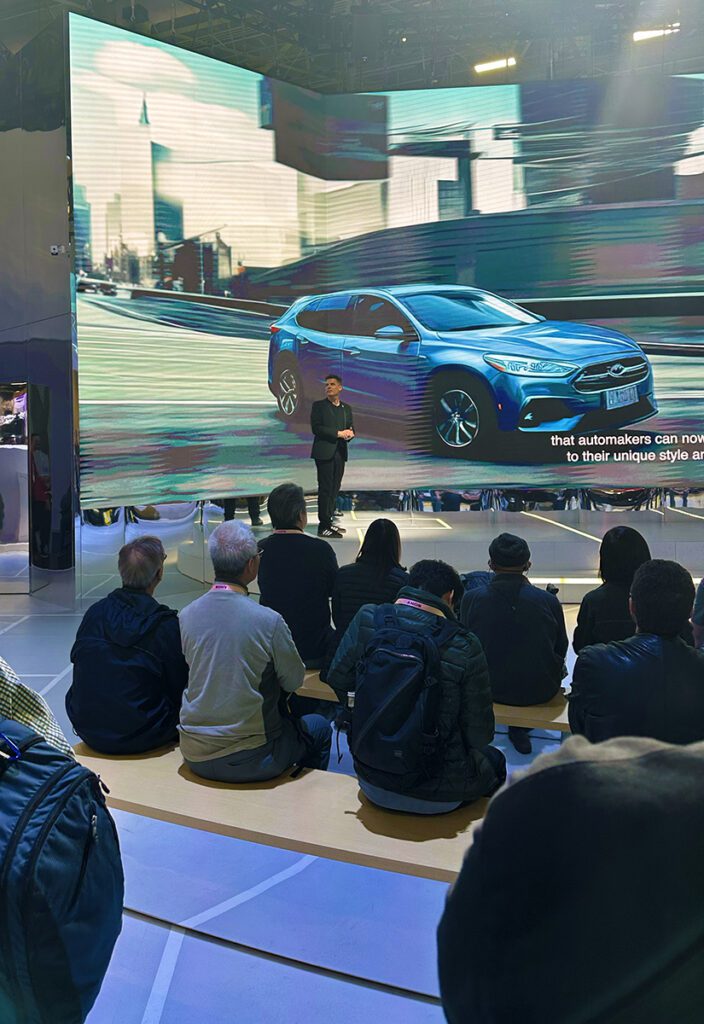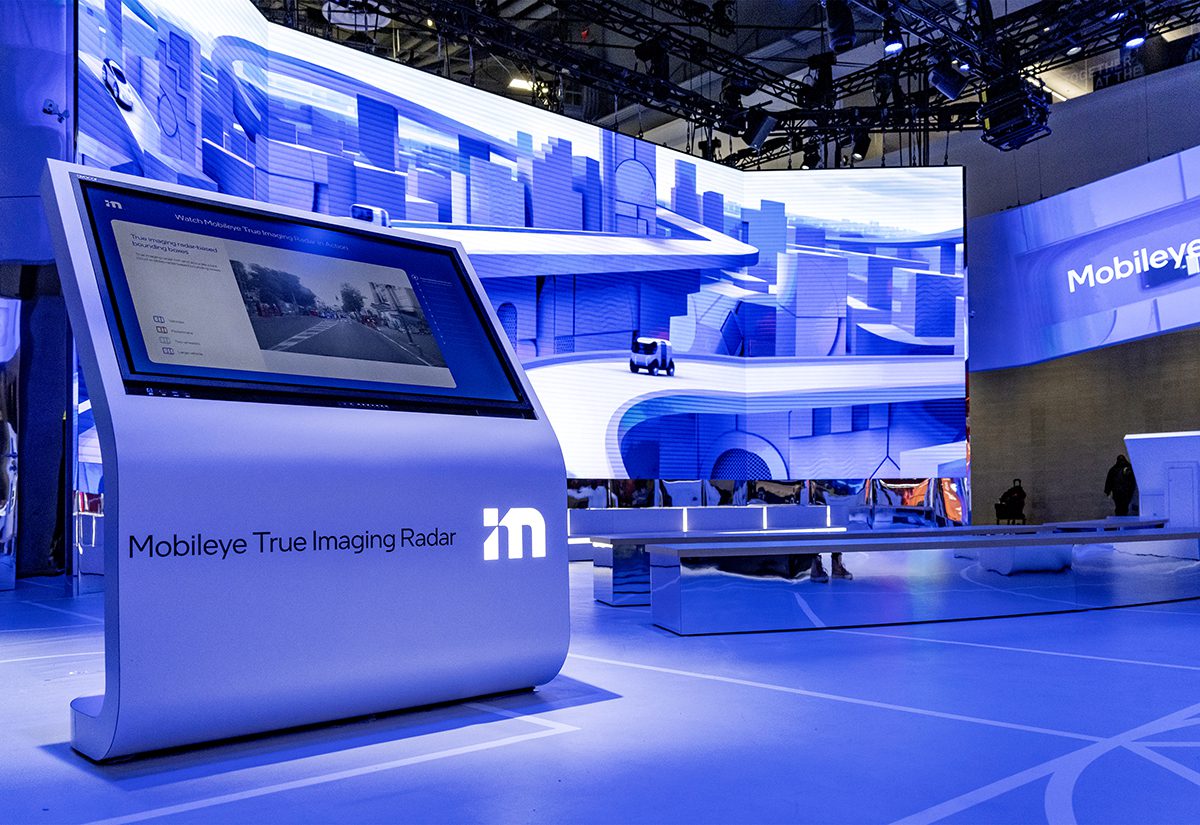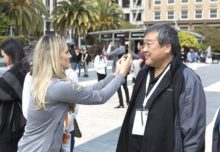Mobileye’s exhibit strategy at CES for years focused solely on market awareness. But the autonomous driving and driver-assistance tech brand, which branched off from Intel last year, has steadily evolved its booth experience at the massive trade show to stimulate excitement and intrigue.
White structures served as canvases for bright “Mobileye blue” moving graphics and demos within the 7,000-square-foot booth. A ribbon projection surface encircled the space above and was illuminated by 22 projectors, while a massive angled LED screen and main stage with bench seating in front hosted on-the-hour presentations by a lively emcee and Mobileye execs with an accompanying countdown clock.
 Trade Show trends:
Trade Show trends:
- CES 2024: We Came, We Saw, We’re Recapping the Best Exhibits
- NRF 2024: Eight Booth Trends Spotted at Retail’s Big Show

Demos, which introduced the Mobileye DXP platform and other systems, were designed to show how the brand’s tech impacts consumers’ daily lives.
“In the past, the booth has been about ‘this is our story,’ and this year, we used the booth to announce our newest innovation, which is a platform for automakers to customize their driving experiences,” Diane Be’ery, vp-marketing at Mobileye, told EM at the show. “You can tell the difference in the conversations, whether in interviews or with people who stop by.”
Live demos, which introduced the new Mobileye DXP platform and other systems, were designed to show how the brand’s tech is integrated into and is impacting attendees’ daily lives. In one demo, a translucent screen moved along a track and illuminated, in X-ray style, where the technology sits within an actual vehicle (in this case, the EV Polestar 3 model coming to the U.S. market in 2024). Another installation displayed a live heat map generated by a hidden LiDAR camera that captured the movements of nearby CES attendees to demonstrate how Mobileye systems detect and help vehicles react to objects in real time. A touch table allowed attendees to manipulate model cars on an interactive surface to dig deeper into the brand’s 8 Connect (collision avoidance) and Shield+ (blind spot detection) systems.
“Mobileye is an ingredients brand; we’re inside cars. The core of the business is a chip, and the software that’s designed with the chip and computer vision to interpret the environment around a car enables features like automatic emergency braking,” Alexis Blais, corporate communications manager at Mobileye, told EM. “The challenge has always been how do we convey really dense, complex technical concepts in a way that is innovative, interesting, dynamic, exciting and digestible.”
An LED globe at the center demonstrated the Mobileye REM (road experience management) system that anonymously logs data on vehicles equipped with the brand’s tech as a way to grow a living map for AVs in the future. “It’s hard to imagine, when a technology is in millions and millions of cars around the world, what that actually means. The globe helps people visualize that,” said Alex Friedman, co-founder of Mobileye’s CES agency, Ruckus Marketing.
Here, we break down three key approaches Mobileye takes for its CES exhibit strategy:
Starting with a blank slate every year.
The design process begins with the high-level message and theme. The team then drills down what innovations they need to showcase, what the minimum requirements are to bring it to life, and then creates a design and fabrication plan that’s flexible due to the ever-evolving tech space and chance of last-minute product announcements or potential partners. For example, the team may not know how many vehicles it will host in the booth until a week prior to the show, which is why an open-concept design is critical. This year, on top of Polestar, the brand hosted the much buzzed-about Volkswagen ID. Buzz minivan, equipped with Mobileye self-driving tech, which is arriving at dealers in 2024.
Focusing on content creation and earned media.
Mobileye’s team prioritizes using the booth and private meeting spaces for exclusive interviews and content. Each year, the team takes a different approach to broadcasting videos of demos, and inviting in subject matter experts and executives for walkthroughs. This year, Polestar CEO Thomas Ingenlath filmed a video in the Mobileye booth for YouTube before the show opened to generate additional buzz. “He’s talking about his own vehicle that he’s releasing, but it’s in [the Mobileye] space, so the branding and the opportunity that comes with it is very important,” Friedman said.
Creating space for high-level conversation.
A double-deck structure behind the LED screen and stage housed an executive lounge and conference area, VIP zone to host investors, partners and other OEMs, four meeting rooms, and an employee lounge. CES presents a rare annual opportunity for the Israel-based executive team to not only network with automakers, but to host internal meetings and gatherings among team members positioned across the globe. Ultimately, the booth space needs to work hard. As the team put it, “There’s always something happening in here.” Agency: Ruckus Marketing.






